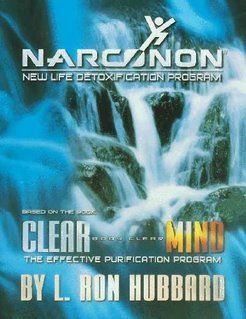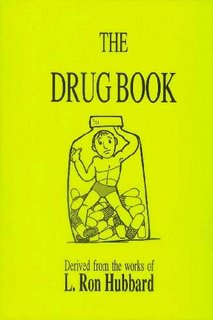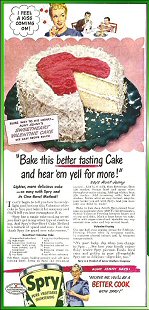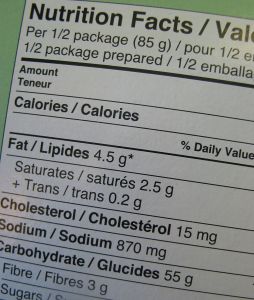First the news story
On January 12, 2007, Representative Anna Crook was in the local Clovis, New Mexico newspaper when the Chamber of Commerce honored her with its 2006 Citizen of the Year Award at a black-tie affair. She was recognized for being instrumental in bringing to New Mexico the Second Chance Program, a holistic treatment program for substance abuse inmates. She had secured $350,000 in federal funding for the alternative program in Albuquerque. Another $160,000 in state funds had been earmarked and it had just asked the state for $3.6 million to continue operations.
Earlier in the month, four articles praising the program appeared in publications everywhere, saying “a unique social rehabilitation model is now in place in the criminal justice system of New Mexico, which offers not only drug rehab but also a program that engenders self-respect in the incarcerated as a way to help reduce criminal tendencies.” They were all authored by Kris Nickerson, Editor-in-Chief of Press Direct International, a global web information source for business and media markets. The articles can be read here, here, here and here.
 The program is based on “The Way to Happiness” by L. Ron Hubbard, described by Nickerson as “a non-religious moral code.” His DPI articles quoted Dr. Alfonso Paredes, M.D., Professor Emeritus of UCLA School of Behavioral Science as saying:
The program is based on “The Way to Happiness” by L. Ron Hubbard, described by Nickerson as “a non-religious moral code.” His DPI articles quoted Dr. Alfonso Paredes, M.D., Professor Emeritus of UCLA School of Behavioral Science as saying:
I have had opportunity to do many visits to substance abuse rehabilitative programs throughout the US for the National Institute on Alchohol [sic] Abuse and Alchoholism [sic] and the National Institute on Drug Abuse. I have had administrative responsibilities for statewide substance abuse rehabilitative systems as well as for programs in major academic institutions in the US. I have never been as deeply impressed as I was during my visit to the Second Chance Program.
The program is also called the Purification Rundown and according to Nickerson, “has been used throughout the world, not only to assist in getting people off drugs, but also to remove chemicals and other toxins from the system and has been used by many of the NY Fire Department and others who worked at Ground Zero after the disaster of 9/11.”
In striking contrast to this press, just days after the Clovis article, Maria Szalavitz of STATS criticized a Wall Street Journal article as being “paralyzed by [a] quack therapy dispute” and failing to report the facts. Exploring further, it is hard to disagree.
The Wall Street Journal had published a cautiously worded article describing a controversy among judges about the Second Chance Program, while noting that 24 New Mexico district judges have already sentenced more than 50 prisoners to the residential treatment program to date. Claims of the program’s success were weaved throughout the 1670-word article. Only at the very end was there a guarded note about possible lack of evidence, saying:
Bill Miller, an addiction expert and retired professor of psychiatry at the University of New Mexico, reviewed Second Chance at the request of the city of Albuquerque. “There's a lot of use of sauna with the idea that you sweat out toxins in the system. I don't know of any scientific basis for that,” he says. “It wasn't clear to me what sort of scientific basis there was even for the conception of the program to begin with.” Does it work? “Basically we just don't know,” he says.
As it turns out, there is a lot of information known about this program — in fact, there are more than 793,000 websites discussing it. It’s more incredible that this program has reached the stature it has among government officials, given the body of evidence against it. Here is some of what we didn’t hear.
The Journal described the program as being based on the principles of L. Ron Hubbard (1911-1986), a pulp fiction and science fiction writer who founded the Scientology religion. Hubbard argued that “toxins from drugs and pesticides accumulate in the body’s fatty tissues, making it difficult for addicts to kick their habit.” According to the Journal, “saunas and vitamins are intended to purge these residues....Inmates eat organic beef. They choose from an array of vitamins to ingest, including potassium pills if they’re feeling dizzy, or bioplasma pills to offset salt depletion. Inmates addicted to heroin can get a massage, called a ‘nerve assist,’ from another inmate. Scientologists believe nerve assists help drugs depart the body.”
But there are more details on this program available on its website. Detoxifying the body by sweating is one of the core premises of the Purification Rundown program. The program claims to eliminate drugs, heavy metals and other environmental contaminants from the body by heat stress and that at the end of its detoxification program the subjects’ IQ will have risen by 6.7 points and their psychiatric and antisocial behavior problems will have improved. It prohibits use of any psychiatric medication, however.
According to Hubbard, exposure to environmental contaminants leads to them build up in fat tissue and sebum of the skin. Supplementation with large amounts of vitamins, such as niacin, is claimed to cause free fatty acid mobilization and the “metabolism of chemicals,” that large amounts of vitamins and minerals are lost in the sweat necessitating large doses to correct deficiencies, and that large doses of polyunsaturated oils increase excretion of chemicals by “blocking the reabsorption of the chemical or altering the rate at which the compound is excreted and the supplements replace some of the mobilized fats so that an exchange is effected.”
Reviews of the evidence
 Scientists have been speaking out and debunking these ideas for decades. The detox principles are centered around what proponents say is a medical specialty called clinical ecology, which holds that many common psychological and physical health symptoms can be triggered in sensitive people by low-levels of exposure to environmental chemicals or foods. According to William Jarvis, Ph.D., President of the National Council Against Health Fraud, these beliefs were popularized in a book by David Steinman titled, Diet for a Poisoned Planet, which espoused dangerous toxins were lurking in our foods.
Scientists have been speaking out and debunking these ideas for decades. The detox principles are centered around what proponents say is a medical specialty called clinical ecology, which holds that many common psychological and physical health symptoms can be triggered in sensitive people by low-levels of exposure to environmental chemicals or foods. According to William Jarvis, Ph.D., President of the National Council Against Health Fraud, these beliefs were popularized in a book by David Steinman titled, Diet for a Poisoned Planet, which espoused dangerous toxins were lurking in our foods.
In 1981, the California Medical Association published a position that clinical ecology is not a valid medical discipline and its claims are not supported by scientific and clinical evidence. The American Academy of Allergy and Immunology and the American College of Physicians followed suit in 1986 and 1989, respectively. The American College of Physicians stated:
Review of the clinical ecology literature provides inadequate support for the beliefs and practices of clinical ecology. The existence of an environmental illness as presented in clinical ecology theory must be questioned because of the lack of a clinical definition. Diagnoses and treatments involve procedures of no proven efficacy. Case reports by clinical ecologists and evaluation of these patients by other physicians indicate that this diagnosis is applied most frequently to persons with symptoms of physiologic (somatic) or psychologic dysfunction, or both.
An FDA Talk Paper on October 15, 1990 pointed out its invalidity and potential hazards. But fears about minute amounts of contaminants in our foods and environment have only grown more widespread. As have detox and purification diets and treatments, some with very real risks.
Hubbard’s detox programs have been around for decades, all virtually identical programs under various names such as Second Chance, Inc., Criminon, Narconon, and the New York Rescue Workers Detoxification Project (and New York Firefighters Detoxification Project). One of the best known based on these principles is Narconon, founded by an inmate of Arizona State Prison in 1966. Like Second Chance, Narconon centers are now scattered across the country and number more than 100 worldwide. The largest Narconon drug and alcohol treatment facility, and its international training center, is in Arrowhead, Oklahoma. Tuition for its students is $21,700 (in 2003) for an average of 2 to 3 months. The Church of Scientology says it has provided major financial support to the Narconon programs since their inception.
An especially prolific collection of medical expert analyses of the detox drug treatment program and the evidence behind it was published from 1989-1991, when Indian Health Services and the Oklahoma Board of Mental Health and Substance Abuse Services was asked to license and approve a center at Chilocco, Oklahoma. The State Health Planning Commission as part of the Chilocco Development Authority had leased property to Narconon stipulating its program had to be state approved and certified, and in turn the five Indian tribes involved would receive $16 million in lease payments over 25 years. It sparked tremendous debate and public commentary, and public hearings on the science, safety and effectiveness of the treatment. The scenario was chronicled by multiple tribal groups, as well as by the Vice President of Australian Skeptics, Peter Bowditch, who has followed these programs around the world.
The supportive evidence for clinical ecology and the Purification Rundown principles provided by the Hubbard detox programs remains unchanged today. The papers cited may look impressive but their relevancy and credibility aren’t. Here are a few of the expert opinions on that evidence and claims:
[I]n general, because of a lack of empirical data, the "Purification Rundown" concept cannot be considered medically sound. — Everett R. Rhoades, M.D., Assistant Surgeon General
[T]here is an absolute lack of data to support his assertion that the Purification Program succeeds in doing what the presently adopted programs fail to do. The documents reviewed also contain many truths and half-truths....Overall, the program proposed by Mr. Hubbard is pure unadulterated "cow pies." It is filled with some scientific truth but mainly is illogical and the conclusions drawn by Mr. Hubbard are without any basis in scientific fact. — Bruce A. Roe, professor and director of the Department of Chemistry and Biochemistry, University of Oklahoma, Norman
[I]n reference to other nutritional faddists, i.e., the megavitamin myth...Excesses of Vitamin A can cause brain swelling (pseudotumor cerebri) with transient losses of vision. Niacin does increase vascular circulation but in the acid form, it has been linked to high bilirubin (jaundice) and liver damage. The appropriate use of niacin is in deficiency states. Excessive use can be toxic to the liver....Excesses of various minerals can cause GI problems and, of more concern, can cause kidney problems including kidney stones. Basically, Hubbard's theories are ...theories without controlled proof. He flings facts around wildly in excess, i.e., to drown the reader in facts in order to convince him that he knows. But he has little to reference and document the facts. — William B. Svoboda M.D., Neurology & Epileptology, Wichita, Kansas
My recommendation about detoxification is to keep away from it. You don't need it. I'm not sure it does what this book describes. It's dangerous. I don't think L. Ron Hubbard has credibility in the scientific world. The author's suggestions about detoxification can be detrimental to your health. — C. Everett Koop, M.D.
I think that it is fair to say that the Purification Rundown is without merit....There is certainly no scientific documentation that exercise significantly speeds up the detoxification process. A significant portion of the Purification Rundown is devoted to running and Sauna Treatments from four to five hours a day. The author states throughout, that sweating increases the rate at which drugs in general leave the body. This is certainly untrue of many drugs, as most drugs of abuse are eliminated from the body by detoxification through the liver, or by passage through the kidneys, or occasionally by passage through the lungs....The author's recommendation for taking Vegetable Oil to replace the oil in our fat tissues that are contaminated with drugs has no documentation or basis in fact....There is no scientific documentation that niacin in any way gets radiation out of the body....In addition there are aspects of the program which I find medically unsafe. — Mark Palmer, M.D., Internal Medicine,Ponca City, Oklahoma
As a member of the board of directors of The National Council Against Health Fraud and a diplomat of The American Board of Nutrition, I am an expert at separating fact from fraud in the nutrition field....the scientific evidence shows the exact opposite of what Hubbard's theory predicts. There is no credible support for claims that large doses of niacin clear toxins from the brain, fatty tissue or any other part of the body. To make matters worse, large doses of niacin are hepatotoxic and can cause serious liver damage. It may also trigger gout, raise blood sugar into the diabetic range, cause itching, flushing and a rash. Nausea and gastritis are other side effects of large doses of niacin. To subject people to these potentially serious side effects on the pretense that they are being "detoxified," "cleared" or "purified" is quackery. — James J. Kenney, Ph. D., R.D.
There is no evidence at all that L.S.D. or any of the other street drugs Hubbard mentions "lodge in the tissues for years." Indeed, these drugs, being water soluble, are excreted quickly....No vitamin deficiencies are due to a toxic effect of street drugs...It is of historical note that no one received a Nobel prize in 1973 for "curing insanity with niacin," as Hubbard claims....Vitamins A and D, if taken in large doses, may be quite harmful....He consistently demonstrates a complete and at times dangerous lack of knowledge concerning biochemistry, physics, and medicine. His theories are based on fallacies and lies; there is no scientific data to support any of them. Furthermore, his program not only fails to deliver what it promises, but may actually be detrimental to the health of those taking it. — David Hogg, M.D., Toronto
There have been multiple official evaluations of the evidence on these detox programs, archived by Australian Skeptics, such as by doctors with the State Department of Health in Sacramento, California in October 1974; the Michigan Ionia State Prison, Department of Corrections in April 1980; and the Swedish National Board of Health and Welfare in November 1996. Professor Folke Sjoqvist, Scientific Advisor of Clinical Pharmacology for the Swedish National Board of Health and Welfare summarized their findings stating:
As evident from this compilation, there is no documentation to show that the Hubbard method of detoxification from drug abuse conforms to scientific standards and medical experience.
For decades, Narconon literature around the world has claimed to have a 78.6% to 85% effective rehabilitation rate. Typically no evidence is provided but when it is, Narconon-commissioned reports are cited. A Swedish investigation of one such report in 1981 found the claims to be false and that only 23% of participants had actually completed the program, with only 6.6% saying that they had remained drug free for one year afterwards.
After hearing the evidence presented at several hearings, the Oklahoma State Board of Mental Health released is Findings of Fact on December 13, 1991. After describing the evidence in detail, it concluded:
Drug treatment program offered by Narconon-Chilocco is an experimental treatment and not proven safe or effective and is not in accord with the highest standards accepted in medical practice as required by statute. No scientifically well-controlled independent, long-term outcome studies were found that directly and clearly establish the effectiveness of the Narconon program for the treatment of chemical dependency and the more credible evidence establishes Narconon's program is not effective. The Board determines that the Narconon Program is not effective in the treatment of chemical dependency. The Board concludes that the program offered by Narconon-Chilocco is not medically safe. Certification is denied.
So what happened? After years of lawsuits, the Oklahoma Board of Mental Health and Substance Abuse Services finally capitulated and exempted the Narconon facility in Chilocco from its requirement to be certified by the state on September 20, 1992. Narconon eventually moved to the Arrowhead location, where it is today.
School children programs
 Hubbard detox programs, notably backed by lawmakers despite no new credible evidence, are now found across the country, including prevention and education programs for school children. Few school officials have investigated these anti-drug programs that had been in schools across the country for two decades. But in 2004, San Francisco and Los Angeles school superintendents called for an extensive scientific review of the health curriculum of Narconon Drug Prevention and Education programs that had been being taught in at least 34 California districts.
Hubbard detox programs, notably backed by lawmakers despite no new credible evidence, are now found across the country, including prevention and education programs for school children. Few school officials have investigated these anti-drug programs that had been in schools across the country for two decades. But in 2004, San Francisco and Los Angeles school superintendents called for an extensive scientific review of the health curriculum of Narconon Drug Prevention and Education programs that had been being taught in at least 34 California districts.
San Francisco Chronicle writer, Nanette Asimov, wrote a recognized series on those programs that summer. No medical doctors or substance abuse experts were able to find any evidence to support the program’s claims. Parents and medical experts were especially concerned with her report, “What Narconon tells students.” The children were being taught that drugs and chemicals were locked up in body fat and could cause mental and physical symptoms for years and make their body toxic, necessitating sweating out in saunas to release. Maria Reza, Los Angeles’ assistant superintendent of student health and human services, sent a memo to all Los Angeles schools halting use of the program pending the review, saying: “The information that is delivered in (Narconon’s) presentations is not based on science, and there have been serious questions raised about the accuracy of this information.” Children do not need to fear that being fat or that their fat friends are harboring toxic chemicals causing them any harm.
In October 2004, the findings of the extensive investigation were released. According to Steve Heilig, director of health and education for the San Francisco Medical Society, the Narconon Drug Prevention and Education programs exemplified “non evidence-based and sometimes factually inaccurate approach, which has not served students well for decades.” As the Chronicle reported: “The medical experts minced no words in their harsh assessment of Narconon.”
Heilig said: “One of our reviewers opined that this (curriculum) reads like a high school science paper pieced together from the Internet, and not very well at that... and that the curriculum contained ‘factual errors in basic concepts such as physical and mental effects, addiction and even spelling.’” According to the Chronicle, a Scientology spokeswoman said that Narconon was the secular version of their religious purification regimen and “at least 39 school districts have recently hosted Narconon in the classroom.”
Including in New Mexico, which is part of Narconon Rio Grande, Inc. based in Rio Rancho and incorporated since May 4, 2001. The Narconon program organizes presentations for children in grades two through 12 in Bernalillo and Sandoval county schools. PNM granted Narconon $7,500 in 2002, enabling the program to reach 8,000 New Mexico students.
Political support
Across the country, Hubbard programs are being prominently funded and endorsed by public officials, although their actual natures are rarely identified.
The U.S. Senate Departments of Labor, Health and Human Services, and Education, and Related Agencies Appropriation Bill, 2007, recommendations include $60 million for “responsible reintegrations of youthful offender programs.” It commends the work of the Second Chance Program, saying: “The Committee expects the Department to support Second Chance through funding to expand and replicate its recidivism prevention program.”
The Second Chance Program brochure for the La Mesa, California location includes endorsements from six Arizona Senators and Representatives.
As the Clovis News Journal reported, Representative Anna Crook said she’s worked with legislators across the country to implement the Second Chance program. She is a member of the National Foundation for Women Legislators and its National Policy Committee on Crime, Justice, Terrorism and Substance Abuse. The National Foundation for Women Legislators is supported, at its highest “Leadership Circle” level, by the Second Chance Program.
In the May 2005 issue of the NFWL newsletter, The Connection, Representative Anna Crook was noted as Chair of the Crime, Justice, Terrorism & Substance Abuse Sub-Committee on Prison Reform and said she had “met with Governor Bill Richardson to discuss the facility’s successful history in Mexico and other locations and to encourage its establishment in New Mexico.” The program in New Mexico would accept not just inmates, but also Native Indian peoples, she said. According to Governor Richardson’s Campaign Reporting Act filing with the Secretary of State, the Second Chance Program had donated $1,000 on July 25, 2006 to his 2006-2007 election campaign. Robert J. Desiderio, former Dean of the University of New Mexico School of Law and former executive director of Con Alma, was registered as a State lobbyist employed by Governor Bill Richardson and Second Chance Program throughout 2006. The Governor announced on January 15, 2007 “a far reaching package of proposals to combat substance abuse in New Mexico through law enforcement and treatment funding.” It is unclear from the “more than $20 million in substance abuse prevention and treatment funding” how much was to go to Hubbard programs.
The center in Albuquerque opened its doors in October, 2006, according to a press release. A local KRQE News investigation of the local Second Chance Program reported it found only a drop box at the office location listed in their brochure.
According to the KRQE investigative report last September, the $100,000 allocation of state moneys for Second Chance had originated from a request by the Governor and the $60,000 for Highlands University had been brokered by former Highland’s president Manny Aragon. But in light of the media attention, KRQE said the $160,000 in state moneys were being returned to the general fund and wouldn’t be going to Second Chance in Albuquerque.
Interestingly, the comments on television made by Dr. Miller, the UNM clinical psychologists quoted in the Wall Street Journal, were considerably stronger than those in the Wall Street Journal. He told local viewers that the program’s claims of effectiveness “are fairly outrageous claims well beyond anything that’s been documented in the literature and of the programs methods, he said: “They certainly aren’t coming from a scientific basis.”
The history of health care is filled with well-intentioned interventions that have received large amounts of government funding and the support of top officials and experts. But that is never proof that they have been carefully researched and shown to be sound, effective ... or safe.
© 2007 Sandy Szwarc
 A bariatric surgeon who invented a type of bariatric surgery was issued a federal warning today for implanting 175 patients with an experimental, unapproved medical device without obtaining full informed consent.
A bariatric surgeon who invented a type of bariatric surgery was issued a federal warning today for implanting 175 patients with an experimental, unapproved medical device without obtaining full informed consent. 





















